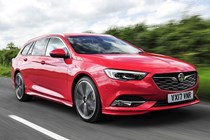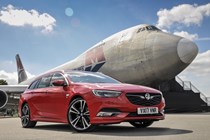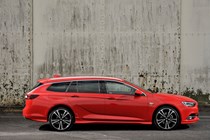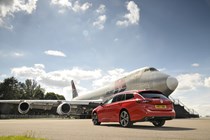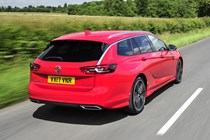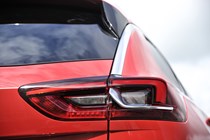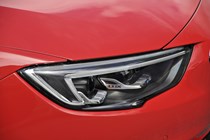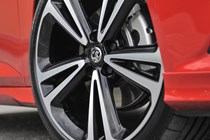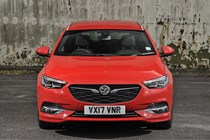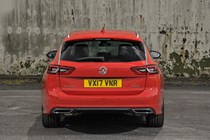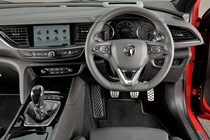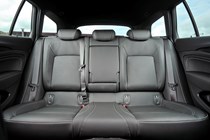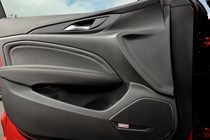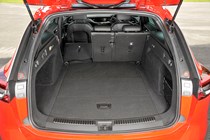
Vauxhall Insignia Sports Tourer (2017-2019) engines, drive and performance
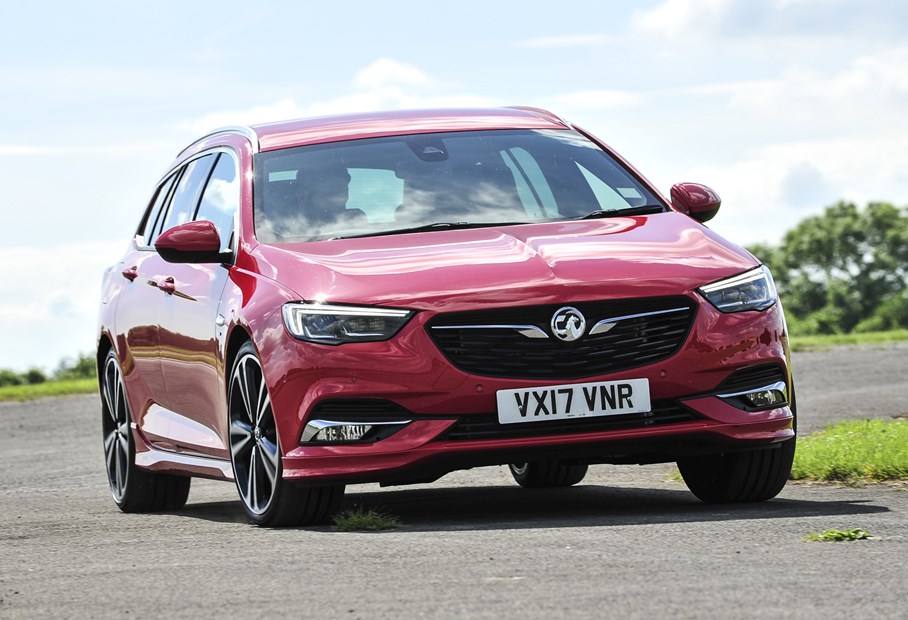
- Three petrol and three diesel engines on offer
- Eight-speed automatic gearbox also available
- Currently no hybrid or electric version
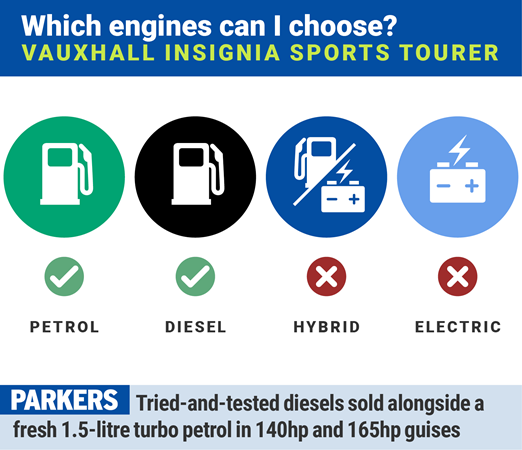
Customers can choose from a choice of three petrol and four diesel engines, spanning from a super-efficient 110hp 1.6-litre Ecotec diesel to a turbocharged 260hp 2.0-litre petrol with all-wheel drive as standard.
Vauxhall Insignia Sports Tourer petrol engines
Diesel has always been the natural engine choice for the Insignia, yet a new 1.5-litre Turbo petrol engine could be about to change this. Available in two different power outputs, customers have a choice between an entry level 140hp unit and a meatier 165hp version. The former produces 250Nm of torque and is capable of accelerating from 0-60mph in 9.6 seconds, going on to a top speed of 129mph.
Upgrade to the 165hp powerplant and there’s the same level of torque on offer, yet it’s available over more of the rev range, peaking at 4,500rpm as opposed to the 140hp unit’s 4,100rpm. This means it’s able to pull for longer in each gear, reaching 60mph from a standstill in 8.6 seconds and onto a top speed of 135mph.
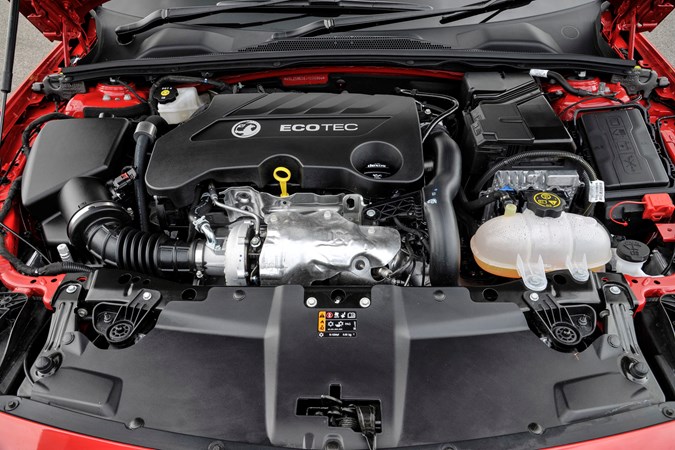
It’s a quiet refined unit most of the time, only become a touch raucous at the top of the rev range. Give the accelerator a firm squeeze even in sixth gear and there’s useful surge of torque pushing the car onwards. And yet, it doesn’t quite feel as powerful as the 165hp suggests, and we’d question how well the engine would perform if the car were loaded with passengers. Take a test drive if you’re in doubt.
The most powerful petrol engine in the range is the 260hp 2.0-litre Turbo 4x4. Capable of the 0-60mph sprint in 7.1 seconds and a top speed of 152mph, it’ll likely be the quickest Insignia Sports Tourer on sale (unless the rumoured VXR model comes to fruition). Torque is rated at 400Nm.
It certainly feels every bit as quick as the 0-60mph time suggests, but those after a sporty drive will be disappointed. The engine sound is dull and the responses muted. We struggle to see who would buy this engine, so bear in mind the potential for poor residual values as a result.
Vauxhall Insignia Sports Tourer diesel engines
Diesel power comes in the shape of a 1.6-litre Turbo D Ecotec or 2.0-litre Turbo D engine. The former is used on a variety of other Vauxhall models and is available in two states of tune.
The lowest of which produces 110hp and 300Nm of torque, giving a 0-60mph time of 10.9 seconds and a top speed of 127mph.
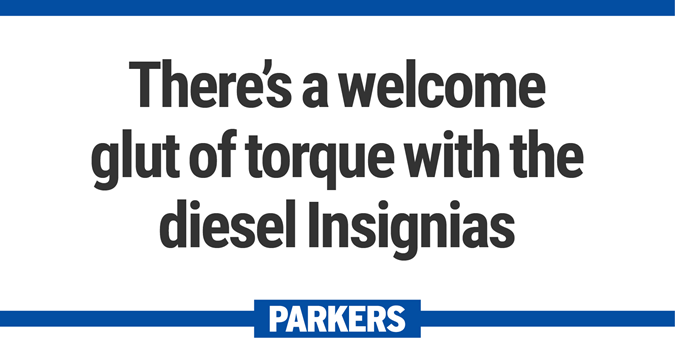
Move up to the 136hp version and you get an extra 20Nm of torque which is enough to cut 0-60mph down to 9.9 seconds (10.2 for the auto). Top speed is 131mph for the manual version and 126mph for the auto. This is expected to be the biggest-selling engine, with the glut of torque it produces useful for everyday driving.
However, it becomes coarse and flat after 3,000rpm, meaning there’s little reason to hold onto the gears. It’s also quite apparent that sixth gear is firmly intended for motorway use, as the car struggles to produce any meaningful pull below 70mph in this gear.
Rounding off the diesel engine options is the 170hp 2.0-litre Turbo D, developing 400Nm of torque and capable of the 0-60mph sprint in 8.4 seconds (8.6 for the auto). Top speed is rated at 139mph for the six-speed manual and 137mph for the auto. We’ve not driven this engine yet, but reckon its combination of effortless pulling power and strong fuel economy could make it the motor to have.
Vauxhall Insignia Sports Tourer gearbox options
A six-speed manual gearbox is standard-fit on all engines except the 170hp 2.0-litre diesel and the 260hp 2.0-litre petrol. Instead, they come with an eight-speed automatic transmission only – which is also available as a cost-option on the 136hp 1.6-litre diesel.
The manual is light and easy to use, but feels soft and sludgy when switching between ratios. It’s nowhere near as precise as the manual transmission in a Mazda 6 Wagon or Ford Mondeo Estate, example.
We only had a brief go in the eights-speed automatic, but can report it shifts gears smoothly and responds to downchanges with reasonable speed (there’s no paddles on the wheel, just the central selector).
- Focus on comfort rather than sporty handling
- Lighter kerbweight means more responsive drive
- Plenty of grip, but also plenty of body roll…
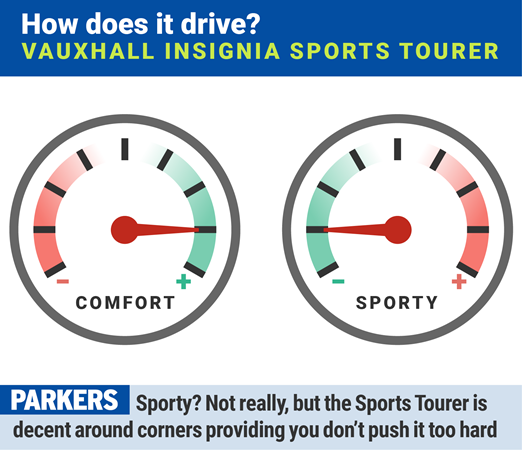
Vauxhall knows its Insignia Sports Tourer customer base exceptionally well, and realises that designing a firm, sporty large estate is just about the best way to scare every last one of them off.
Hence why the 2017 Insignia Sports Tourer is firmly focused towards soft, supple-riding comfort no matter which spec you have it in. However, despite the car’s increased size it’s lost up to 200kg over its predecessor, meaning it does feel a touch lighter on its feet and more willing to turn into a bend, as we found out when we ran one for six months.
Drive around at a slow to medium pace and it flows nicely from corner to corner, with a slow but well-judged steering feel and adequate body control. Yet, push on to higher speeds and the Insignia Sports Tourer begins to falter.
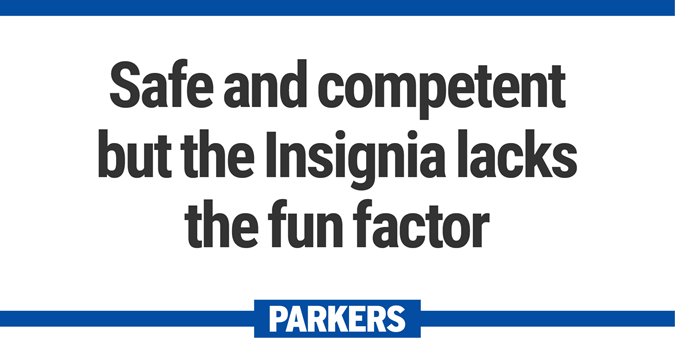
Bodyroll (the body shell’s lateral movement on the chassis) increases substantially the quicker you go (or during emergency manoeuvres) and although outright grip levels are high, it doesn’t feel anywhere near as crisp to drive as a Mazda 6, or even a Skoda superb for that matter. Safe and competent in the corners, but Vauxhall’s big estate is lacking in driver enjoyment.
Despite the car’s size, it’s not hugely difficult to park or place in tight spaces. There’s decent visibility on all corners of the car with, even if the blindspots are larger than on your average family estate. Disappointingly, parking sensors are only standard on higher-spec cars, otherwise being available as a cost option.



